
Valley and Ridge Physiography: Characteristic Features (Part 1)
• Long, linear, parallel valleys and ridges with a strong northeast-southwest trend are the most characteristic features of the Valley and Ridge. These features form when different layers of rock erode at different rates.
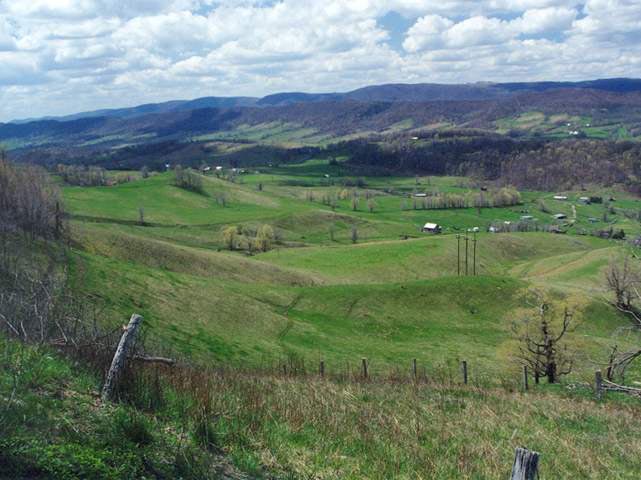
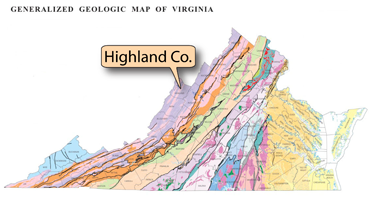 Typical Valley and Ridge topography in Highland County. Paleozoic rocks of different erosional resistance cause this. Soft rocks such as limestone form valleys. Hard rocks such as sandstone make ridges. (Photograph by Stan Johnson)
Typical Valley and Ridge topography in Highland County. Paleozoic rocks of different erosional resistance cause this. Soft rocks such as limestone form valleys. Hard rocks such as sandstone make ridges. (Photograph by Stan Johnson)
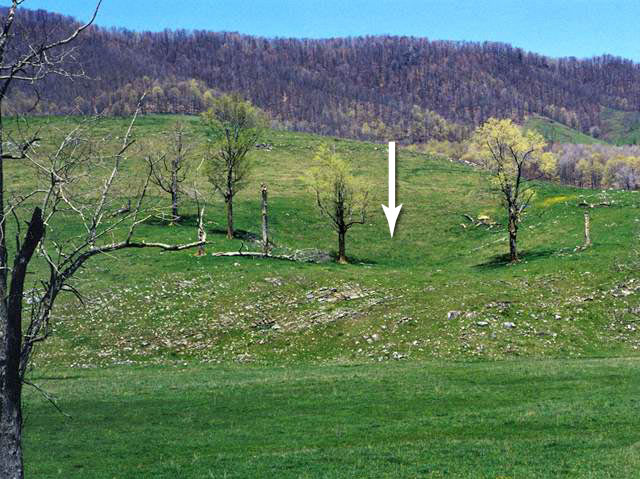
Valleys in the Valley and Ridge are underlain by rocks that erode more easily, such as limestone and shale. Here, limestone outcrops are visible in a valley in Highland County. Notice the sinkhole (arrow) that has formed where the limestone has been dissolved away by groundwater. (Photograph by Stan Johnson)
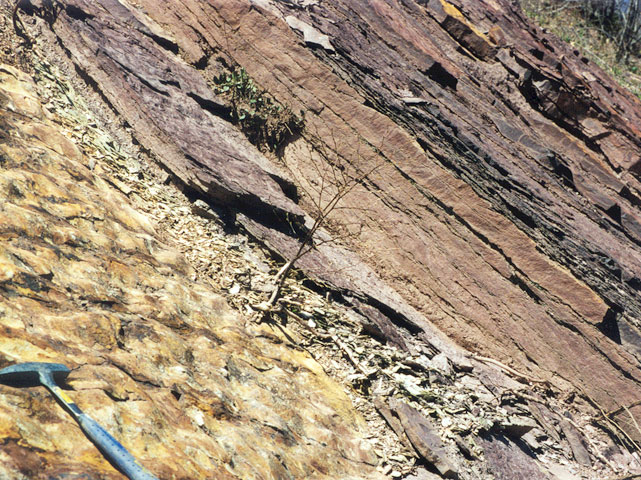
Sandstone in the Rose Hill Formation in Highland County holds up a ridge in the Valley and Ridge. Sandstone and conglomerate are resistant to erosion, and therefore form ridges in the Valley and Ridge. (Photograph by Stan Johnson)
• The Great Valley has abundant caves, sinkholes, sinking creeks, and even natural bridges. These features, called karst features, form because the carbonate rock underlying the valley is easily dissolved by water.
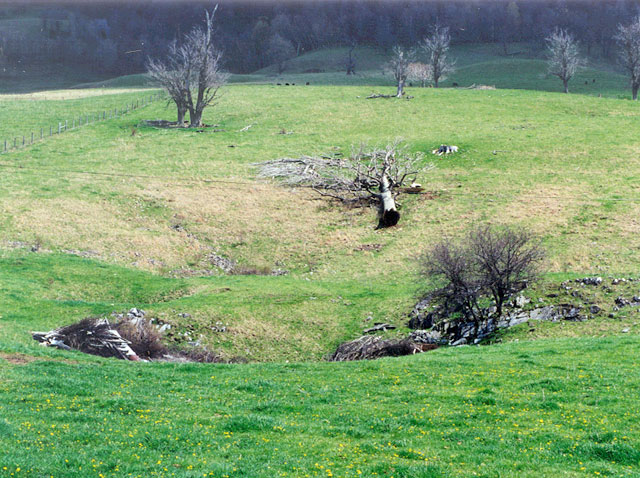
Karst topography is present in many valleys of the Valley and Ridge. Karst topography includes sinkholes like these in Highland County. (Photograph by Stan Johnson)
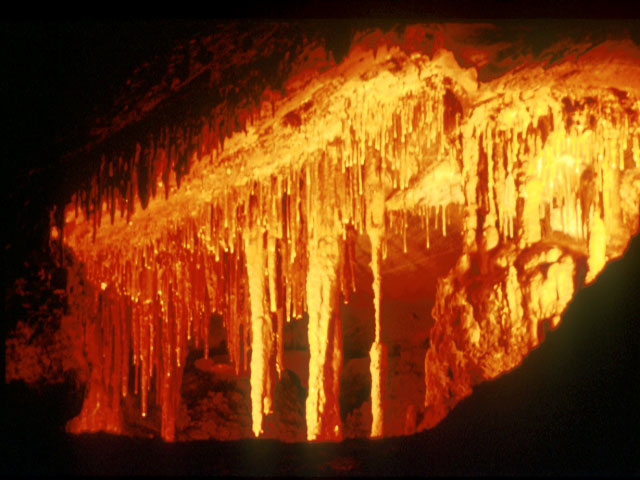
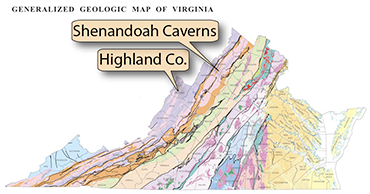 Areas of karst topography includes caves like Shenandoah Caverns, in Shenandoah County. (Photography by Parvinder Sethi)
Areas of karst topography includes caves like Shenandoah Caverns, in Shenandoah County. (Photography by Parvinder Sethi)